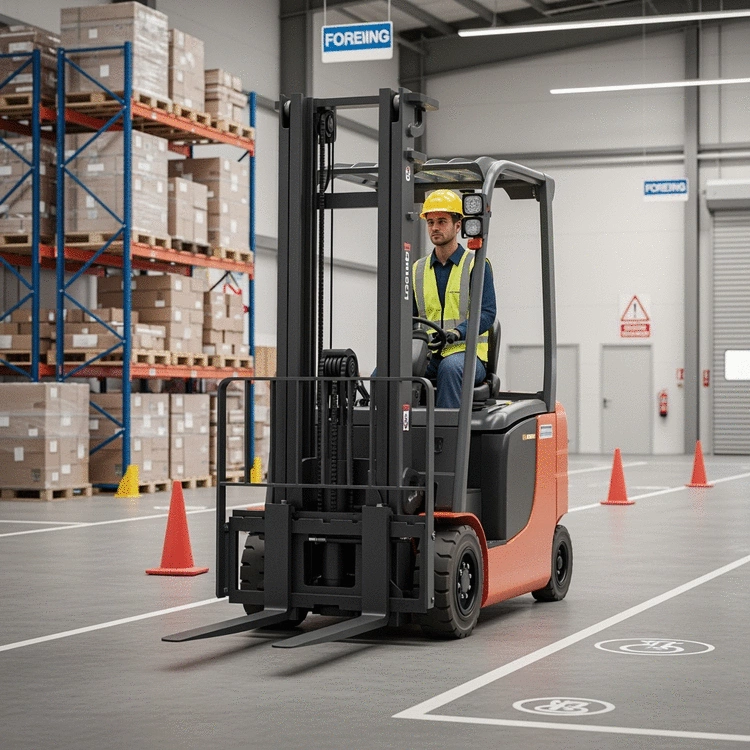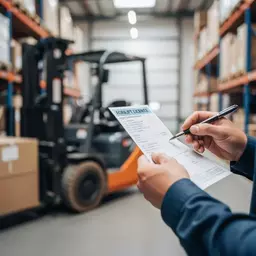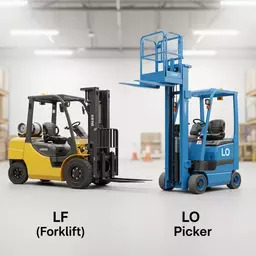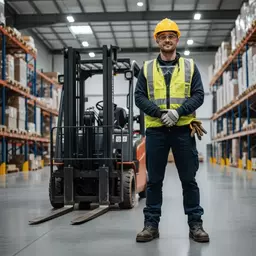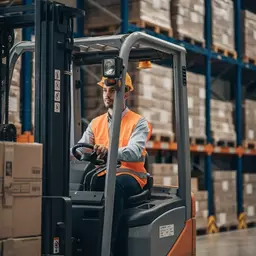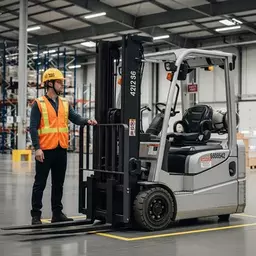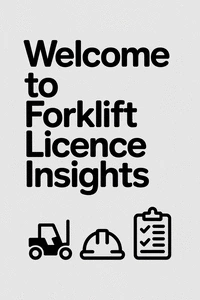In 2025, understanding forklift safety isn't just an option—it's a necessity. With over 30% of workplace injuries involving forklifts, prioritizing safety measures can drastically improve workplace conditions and reduce accidents.
What You Will Learn
- The critical importance of completing mandatory training and certification programs for forklift operators.
- Essential Personal Protective Equipment (PPE) that every operator must wear to ensure safety.
- Effective traffic management strategies to create a safer work environment for both operators and pedestrians.
- The necessity of routine inspections and maintenance schedules to prevent equipment-related accidents.
- Understanding compliance obligations under the Work Health and Safety Act to promote a culture of safety.
Key Pillars of Forklift Safety
Understanding these critical areas helps in cultivating a safer workplace environment, reducing incidents, and ensuring compliance with Australian regulations.
Understanding Forklift Safety: Essential Rules for Operators in Australia
At Forklift Licence Insights, we believe that understanding forklift safety is paramount for every operator. In 2025, the stakes are higher than ever. With workplace incidents still prevalent, adhering to safety regulations is essential. Did you know that over 30% of workplace injuries involve forklifts? Implementing safety practices can significantly reduce these statistics and create a safer work environment for everyone!
By prioritizing safety, we not only protect ourselves but also our colleagues and the business. Improved safety practices lead to fewer accidents, lower insurance costs, and a more productive workplace. It's clear that safety matters, and the rules we follow can make a real difference in our daily operations.
Why Forklift Safety Matters in 2025
As we move forward in 2025, the importance of safety cannot be overstated. The workplace environment has evolved, and so have the regulations governing forklift operation in Australia. Adhering to these rules is essential not just for compliance but for cultivating a culture of safety.
- Increased Compliance Costs: Failure to follow safety regulations can lead to hefty fines and other penalties.
- Enhanced Productivity: A safe work environment reduces accidents, allowing workers to focus on their tasks.
- Positive Reputation: Companies known for safety attract better talent and clients.
When we look at the statistics surrounding forklift-related incidents, it becomes clear that prioritizing safety is crucial. By embracing safety measures, we can contribute to a safer industry and ensure that everyone returns home safely at the end of the day!
Key Safety Procedures Every Forklift Operator Should Follow
Every forklift operator has a responsibility to adhere to specific safety procedures, starting with proper training and certification. Understanding these key procedures can help minimize risks and keep operations running smoothly.
Training and Certification Requirements
In Australia, training and certification are mandatory for all forklift operators. This ensures that individuals are equipped with the necessary skills and knowledge to operate forklifts safely and efficiently. Registered Training Organisations (RTOs) offer courses that cover both theory and practical components.
- Foundational Knowledge: Understanding how forklifts work, their components, and safety features.
- Practical Skills: Hands-on experience operating forklifts under supervision.
- Assessment: Completing assessments to demonstrate proficiency and safety awareness.
Completing these training programs not only enhances your skills but also ensures compliance with Australian regulations. For comprehensive guidelines on powered industrial trucks and operator training, refer to the OSHA Regulations for Powered Industrial Trucks (1910.178). Remember, being well-trained is the first step to being a safe operator!
Forklift Operator Responsibilities and Personal Protective Equipment (PPE)
As a forklift operator, your responsibilities extend beyond just operating the equipment. You must also ensure your own safety and the safety of those around you. One of the key aspects of this is using proper Personal Protective Equipment (PPE).
- Hard Hats: Protect your head from falling objects.
- High-Visibility Clothing: Ensure you are easily seen in busy environments.
- Steel-Toed Boots: Protect your feet from heavy loads.
Wearing the right PPE is not just a recommendation; it’s a requirement! By doing so, we can significantly reduce the risk of injury on the job. Always remember to check your equipment and ensure everything is in good condition before beginning work.
Traffic Management in the Workplace
Effective traffic management is essential in any workplace where forklifts operate. This includes establishing clear pathways, using signage, and implementing speed limits. It’s crucial to create a safe environment where pedestrians and equipment can coexist.
- Designated Pathways: Clearly marked paths for forklifts can help avoid collisions.
- Signage: Using signs to inform operators of hazards or changes in traffic flow.
- Speed Controls: Setting speed limits for forklifts to maintain control and prevent accidents.
Making sure everyone is aware of these traffic management strategies can greatly improve safety on the worksite. Remember, communication is key to ensuring everyone knows the rules and follows them!
Regulatory Compliance: Following Australian Safety Standards
Understanding the regulatory landscape governing forklift operations in Australia is vital for maintaining safety and compliance. By adhering to the relevant standards, we can protect ourselves and our colleagues from potential hazards.
Overview of Australian Forklift Safety Regulations
The Australian regulations governing forklift safety cover various aspects, including licensing, operational guidelines, and safety standards. These regulations ensure that all operators meet specific requirements to maintain safety on the job.
- Licensing: Operators must hold a valid forklift licence issued by an accredited body. For additional resources on forklift fundamentals and safety, consider consulting the Army Safety's Risk Management Magazine.
- Workplace Safety Standards: Follow guidelines set by Safe Work Australia to ensure compliance.
- Training Requirements: Regular training and re-certification to enhance skills and knowledge.
Understanding these regulations is crucial for all forklift operators. It not only keeps you compliant but also promotes a safer work environment for everyone!
Compliance Obligations Under the Work Health and Safety Act
Under the Work Health and Safety Act, forklift operators have specific compliance obligations. These include ensuring that all safety measures are in place and that proper training is provided to all staff members.
- Duty of Care: Operators must ensure their actions do not pose a risk to themselves or others.
- Reporting Obligations: Any incidents or near-misses must be reported to management.
- Continuous Improvement: Regularly review safety policies and practices to enhance workplace safety.
Being aware of these obligations not only helps with compliance but also fosters a culture of safety within the workplace. Let's make safety a shared responsibility!
Consequences of Non-Compliance
Neglecting to comply with safety standards can have serious legal implications. Forklift operators and their employers can face hefty fines, legal action, or even imprisonment in severe cases. For more information on powered industrial truck standards, refer to OSHA's Powered Industrial Trucks guidelines.
- Heavy Fines: Non-compliance can result in significant financial penalties.
- Legal Action: Companies may face lawsuits from injured parties.
- Increased Insurance Costs: Higher risk can lead to increased insurance premiums.
Understanding these consequences is crucial for every forklift operator. Let’s prioritize compliance to avoid these risks and ensure a safe working environment!
Maintaining Forklift Safety: Best Practices for Equipment Maintenance
Proper equipment maintenance is a critical aspect of forklift safety. Regular inspections and maintenance schedules can help prevent accidents caused by equipment failures.
Regular Inspections and Forklift Maintenance Schedules
Routine inspections are essential to ensure that forklifts are in safe working condition. Establishing a maintenance schedule helps in keeping the equipment in top shape.
- Daily Pre-Operational Checks: Operators should perform checks before starting their shifts.
- Regular Service Intervals: Schedule maintenance based on manufacturer recommendations.
- Logs and Records: Keep detailed records of inspections and maintenance performed.
By prioritizing regular inspections, we can catch issues before they become serious problems. It’s all about being proactive instead of reactive!
Adopting Ergonomic and Advanced Safety Technologies
Incorporating ergonomic design and advanced technologies can significantly enhance both safety and operator comfort. Using modern solutions can lead to better efficiency and reduced risks.
- Ergonomic Seats: Designed to provide support and reduce fatigue during long shifts.
- Advanced Safety Systems: Technologies such as AI and IoT can provide real-time data on equipment status.
- Automated Alerts: Systems that notify operators of potential hazards or maintenance needs.
Investing in these technologies is not just smart; it’s essential for creating a safer and more efficient workplace. Let’s embrace innovation for improved safety!
Addressing Unique Environmental Challenges in Forklift Operations
Forklift operations can face unique challenges, especially in varying environmental conditions. Understanding these challenges and knowing how to address them is crucial for safety.
Safeguarding Against Extreme Weather Conditions
Extreme weather can have a significant impact on forklift safety. Temperature variations, rain, and even high winds can pose risks to operators and equipment.
- Training on Weather Conditions: Operators should be trained to recognize hazardous weather conditions.
- Equipment Adjustments: Adapt equipment settings to cope with harsh environmental factors.
- Worksite Modifications: Implement solutions such as covered areas or indoor operations during bad weather.
By being proactive about weather-related challenges, we can mitigate risks and ensure safer operations, no matter the conditions!
Case Studies: Success Stories of Improved Forklift Safety
Learning from others is a powerful tool. Businesses that have successfully implemented safety rules can serve as inspiration for us all. By examining these case studies, we can see how effective safety protocols lead to a more robust safety culture.
- Company A: Reduced incidents by 40% after implementing a comprehensive training program.
- Company B: Improved equipment maintenance protocols resulted in zero accidents over two years.
- Company C: Established a safety committee, significantly enhancing communication around safety concerns.
These success stories remind us that with dedication and the right strategies in place, we can achieve a culture of safety that benefits everyone!
Emergency Procedures and Incident Reporting
In any workplace, having established emergency procedures is vital for ensuring safety. Being prepared can make all the difference in how we handle unexpected situations.
- Emergency Response Plans: Develop and communicate clear plans for emergencies.
- Regular Drills: Conduct drills to ensure everyone knows their role in an emergency.
- Incident Reporting Systems: Implement an easy-to-use reporting system to document near-misses and incidents.
Establishing these procedures ensures that we are prepared for any situation, ultimately fostering a safer working environment. Let’s stay prepared and prioritize safety!
Did You Know?
According to Safe Work Australia, approximately 30% of workplace injuries are linked to forklifts. This statistic underscores the necessity of implementing robust safety measures in every operation.
By adhering to safety protocols and engaging in regular training, we can collectively work towards reducing these incidents and fostering a safer workplace for all.
Frequently Asked Questions (FAQs) about Forklift Safety
- 1. Why is forklift safety so important in 2025?
- Forklift safety is crucial in 2025 because over 30% of workplace injuries involve forklifts. Adhering to safety regulations helps reduce accidents, ensures compliance, enhances productivity, and improves a company's reputation.
- 2. What are the mandatory training and certification requirements for forklift operators in Australia?
- In Australia, all forklift operators must complete mandatory training and certification programs offered by Registered Training Organisations (RTOs). These programs cover foundational knowledge, practical skills, and assessments to ensure proficiency and compliance with regulations.
- 3. What essential Personal Protective Equipment (PPE) should forklift operators wear?
- Essential PPE for forklift operators includes hard hats to protect against falling objects, high-visibility clothing to ensure operators are easily seen, and steel-toed boots to protect feet from heavy loads. Wearing appropriate PPE is a mandatory requirement.
- 4. What are some effective traffic management strategies for workplaces with forklifts?
- Effective traffic management strategies include establishing clearly designated pathways for forklifts, using signage to inform operators of hazards and traffic flow changes, and implementing speed controls to prevent accidents and maintain control.
- 5. What are the compliance obligations under the Work Health and Safety Act for forklift operators?
- Under the Work Health and Safety Act, forklift operators have a duty of care to ensure their actions do not harm themselves or others, an obligation to report all incidents and near-misses, and a responsibility for continuous improvement of safety policies and practices.
- 6. How does regular equipment maintenance contribute to forklift safety?
- Regular equipment maintenance, including daily pre-operational checks, scheduled service intervals based on manufacturer recommendations, and detailed logging of inspections, helps prevent accidents caused by equipment failures and ensures forklifts remain in safe working condition.
Summarizing Essential Forklift Safety Rules for Operators in Australia
As we look ahead to 2025, it's crucial for all forklift operators to familiarize themselves with the essential safety rules that govern our industry. Adhering to these guidelines not only protects you but also contributes to a safer work environment for everyone. Here are some key takeaways on forklift safety and compliance:
- Complete the required training and certification programs.
- Utilize appropriate Personal Protective Equipment (PPE) at all times.
- Implement effective traffic management strategies in the workplace.
- Conduct regular inspections and maintenance on equipment.
- Stay updated on compliance obligations under the Work Health and Safety Act.
By keeping these rules at the forefront, you can play a vital role in promoting safety within your workplace. Remember, knowledge is power! The more informed you are about safety protocols, the better equipped you'll be to handle any situation.
Encouraging Commitment to Safety in the Workplace
Promoting a culture of safety is essential in any operation involving forklifts. I encourage all operators to prioritize safety in their daily tasks. This includes not only following established protocols but also actively seeking ways to improve safety measures. By fostering a commitment to safety, we can reduce incidents and create a supportive work environment for everyone.
Consider conducting regular safety meetings or training refreshers with your colleagues. Sharing experiences and insights can help everyone stay vigilant and aware of potential hazards. Remember, safety doesn’t just happen; it’s a continuous effort! Every small improvement can make a significant difference.
Get Involved: Resources for Enhanced Forklift Safety
Staying informed about the latest resources and training programs is key to maintaining compliance and enhancing safety. Here are some valuable resources you can explore:
- Safe Work Australia - Offers guidelines and resources for workplace safety.
- Australian Standards - Provides standards related to forklift operations.
- Local Registered Training Organisations (RTOs) - Look for RTOs that offer forklift training and certification in your area.
- Industry publications and newsletters - Subscribe to stay updated on safety trends and best practices.
Utilizing these resources ensures you remain compliant and informed about industry standards. Remember, at Forklift Licence Insights, we are committed to providing you with the knowledge and tools necessary to succeed in your forklift licensing journey!
Understanding Forklift Types and Load Handling Techniques
Understanding the various types of forklifts and their respective load handling techniques is crucial for ensuring safety during operations. Here’s a brief overview:
- Counterbalance Forklifts: Ideal for lifting heavy loads and maneuvering in tight spaces.
- Reach Trucks: Designed for narrow aisles; perfect for warehouses with limited space.
- Pallet Jacks: Suitable for moving pallets short distances; a great tool for smaller loads.
- Order Pickers: Useful for picking items directly from shelves; they enhance productivity in retail and warehousing.
When handling loads, always follow these best practices:
- Assess the load's weight and dimensions before lifting.
- Ensure the load is balanced and secure before moving.
- Communicate clearly with your team to avoid accidents.
- Use appropriate lifting techniques and equipment to prevent strain.
By understanding the different forklift types and employing safe load handling techniques, you can significantly reduce the risk of accidents and improve overall efficiency on the job. Always prioritize safety and continuously look for ways to enhance your skills as a forklift operator!
Recap of Key Points
Here is a quick recap of the important points discussed in the article:
- Complete the required training and certification programs to ensure safe operation.
- Utilize appropriate Personal Protective Equipment (PPE) at all times for personal safety.
- Implement effective traffic management strategies in the workplace to prevent accidents.
- Conduct regular inspections and maintenance on equipment to ensure safety and compliance.
- Stay updated on compliance obligations under the Work Health and Safety Act.
